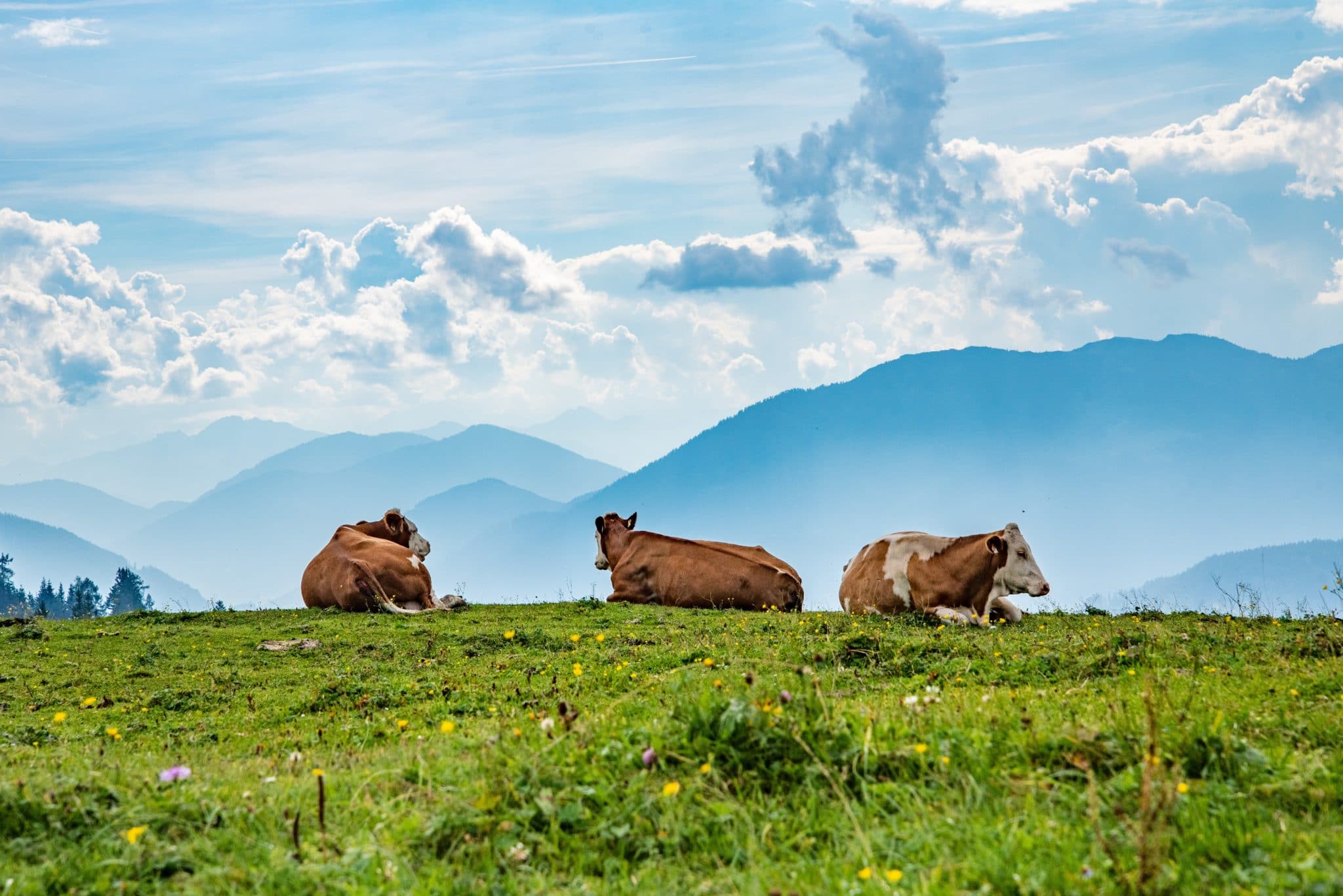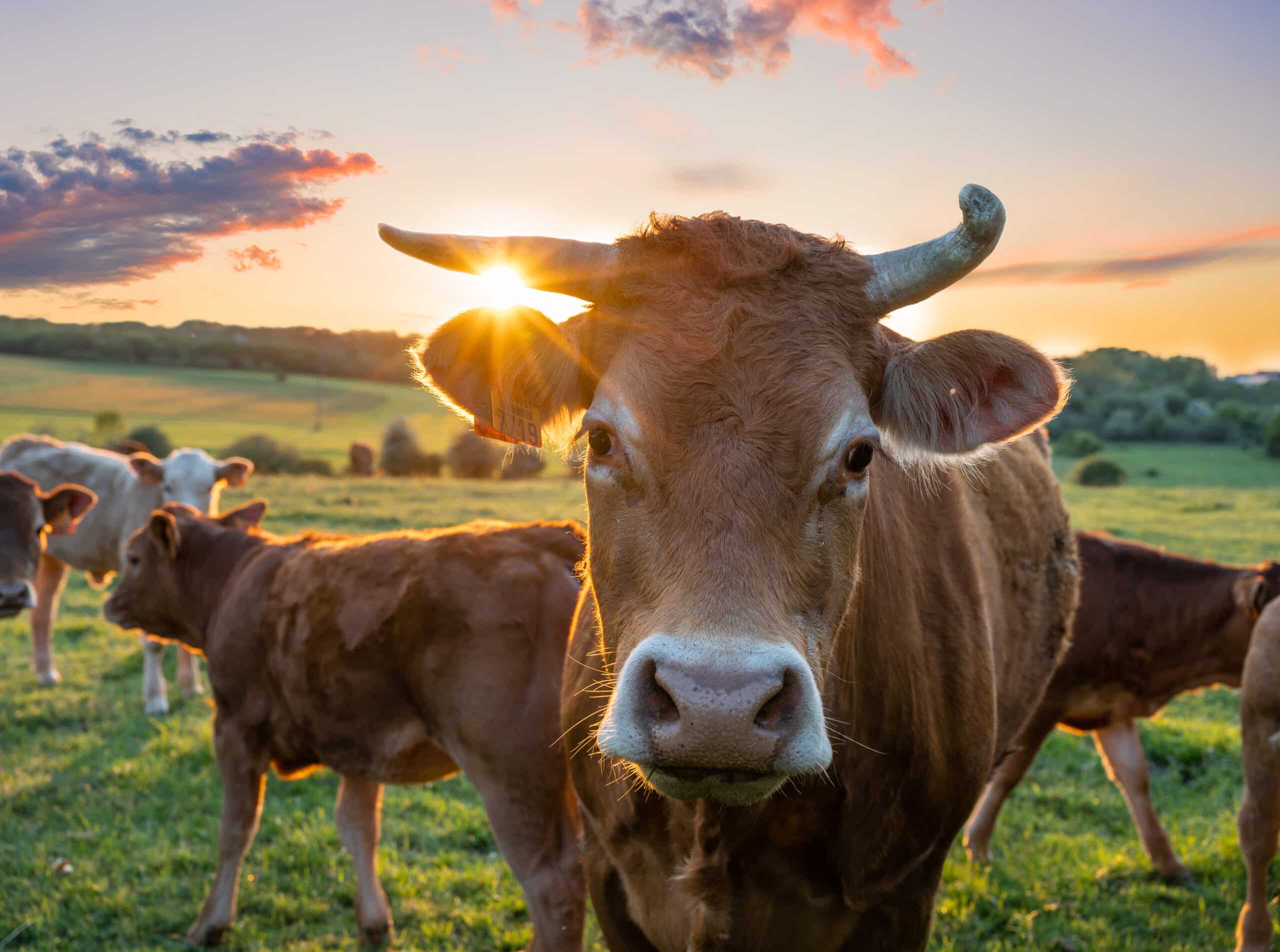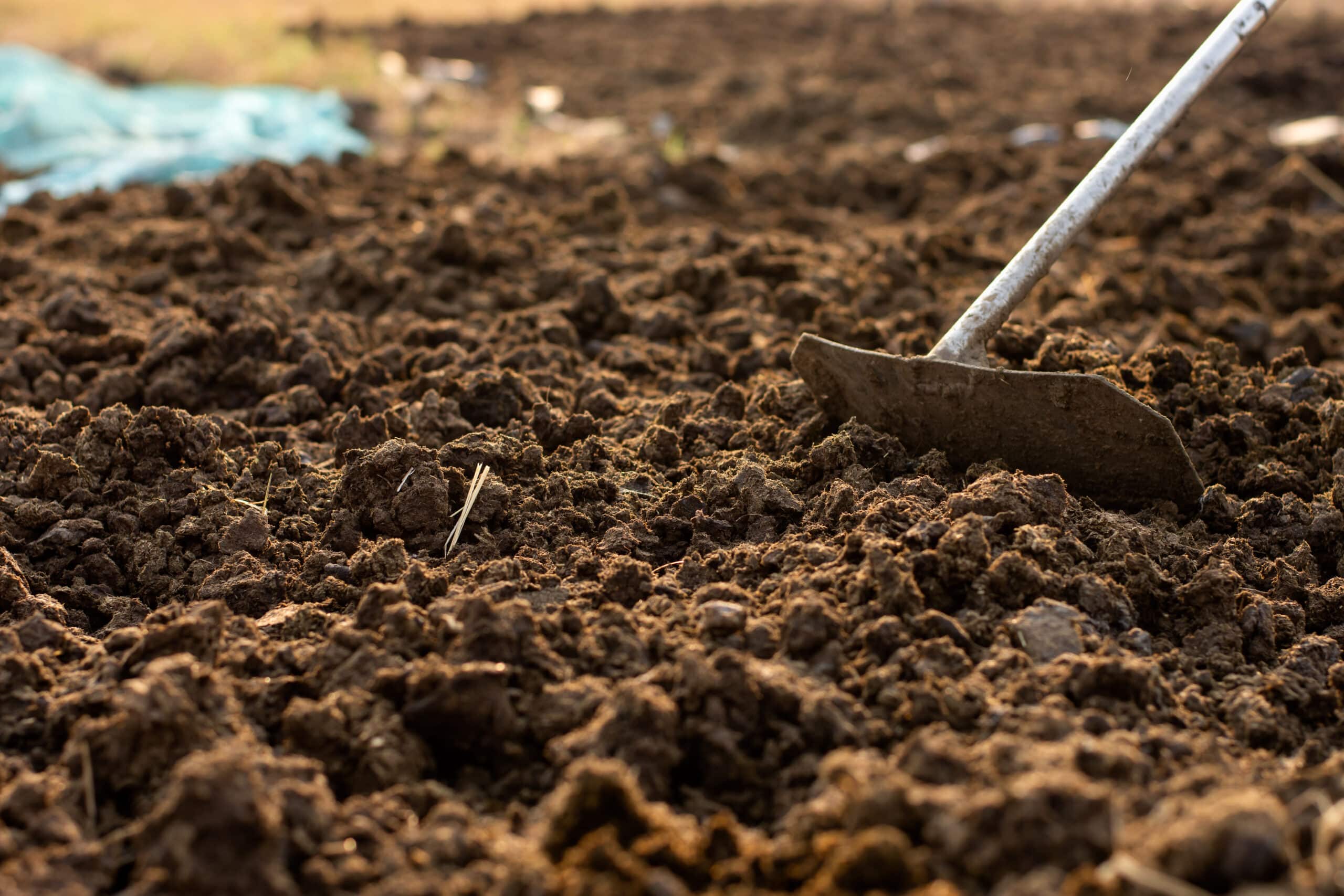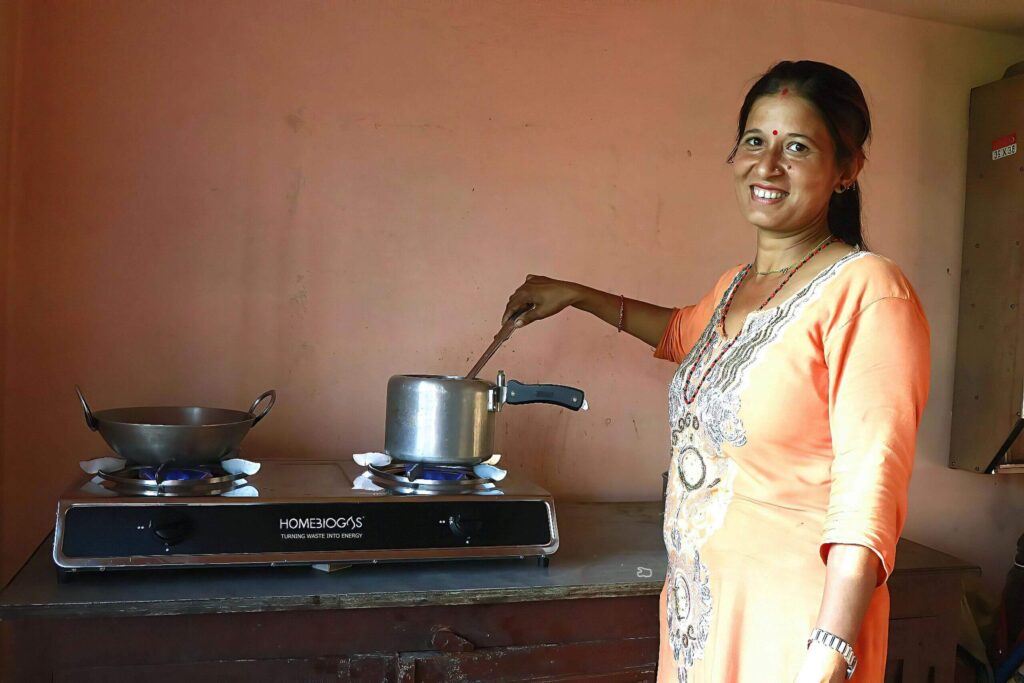
What is cow dung biogas?
Cow dung biogas is a mixture of gases (methane, carbon dioxide, and hydrogen sulfide) obtained from cow manure fermented in a sealed environment, called a tank or digester. These gases are released during fermentation and captured to be used for energy. It’s a sustainable, cheap energy source that has the potential to substitute fossil fuels and direct biomass burning to obtain a sustainable energy source.
The process that transforms waste into fuel is called anaerobic digestion — bacteria break down biodegradable cow manure in the absence of oxygen. The process reduces the odors and germs usually associated with manure storage and decomposition. Digestate from biogas production becomes organic fertilizer, just like manure, because it contains the same nutrients.
Cow dung biogas typically contains:
- 50-75% methane (CH4)
- 25-50% carbon dioxide (CO2)
- Traces of other substances such as water vapor (H2O) and hydrogen sulfide (H2S)
- Rarely residual amounts of mercaptans, oxygen, and nitrogen.
Cattle farms are the largest producer of greenhouse gases from agriculture activities, as one cow can produce up to 220 pounds of methane annually. Biogas systems that produce cow dung biogas can counter climate change and make dairy farms more sustainable by helping farmers use animal waste and reducing methane emissions.
Biogas used to be an energy source in many African and Asian households. The first generation of anaerobic digesters helped many families in India, Pakistan, or Indo-China access consistent self-sufficient energy supplies all year round. Lately, biogas has become a necessary component of the energy mix for Western European and Northern American countries.

How much biogas does cow dung produce?
- According to the University of the Punjab, Lahore, Pakistan, 1 kg (2.2 pounds) of cow dung can produce about 15 to 30 liters of biogas per day. Adding wheat straw to obtain a ratio between cow dung, crop residue, and inoculum of 50:30:20 can increase production to 20 to 60 L per day.
- According to the Department of Agriculture Product Technology, Lampung University, Lampung, Indonesia, 1 kg of cow dung can sustain the production of as much as 40 liters of biogas.
How is cow manure biogas collected?
Cow dung is deposited and mixed inside a collection tank until it becomes a homogeneous slurry. The biomass is then fed into sealed tanks (digesters), where anaerobic digestion occurs.
Microbes break down the organic matter inside the digester to obtain methane and other gases. In the final stage of the process, the gas can be purified (upgraded) by removing impurities and carbon dioxide.
Fresh organic matter must be introduced to the digester regularly for best results.
Is cow dung biogas a truly sustainable energy source?
Overall, turning cow dung into renewable energy makes sense environmentally and economically. A single cow produces 29.5 kg (65 pounds) of manure and between 250 and 500 liters of methane each day, turning massive cattle farming into a long-term risk for the environment.
Cow dung is residual matter — it can’t be used to feed other animals or people. It impacts the environment with significant amounts of methane emissions and presents a health risk if not adequately managed.
Processing this waste to obtain biogas and digestate is considered a sustainable waste management solution. Moreover, it provides cheap gas to communities in developing areas.
However, generalization can be dangerous, as the profitability and sustainability of the process depend on the amount of waste a farm or a community needs to recycle and the existing infrastructure that makes biogas easy to use as cooking gas or for heating.
Pros & cons of cow dung biogas
Cow dung biogas advantages:
- It’s an eco-friendly, renewable energy source that can reduce greenhouse gas emissions.
- It reduces water and soil pollution, keeping cow dung from landfills.
- It encourages a circular economy and gives access to clean energy in developing areas.
Cow dung biogas disadvantages:
- Costs of biogas production are high, between upfront expenses and system maintenance.
- Biogas production can be time-consuming.
- Most systems require significant volumes of cow manure, which often arrives from multiple sites.
Cow dung waste management solutions
Effective cow dung waste management is one of the most important things farmers can do for the health of their animals, families, land, water, and the environment. Besides making cow dung biogas, another popular waste management solution is composting.
Cow manure is nutrient-dense and ideal for plant growth, so composting it to make organic fertilizer is an effective method for recycling these residues. Most compost piles use aerobic digestion to break down the waste, but anaerobic or mixed aerobic-anaerobic systems can also be used.
Cow manure compost is a 3-2-1 NPK fertilizer containing 3% nitrogen, 2% phosphorus, and 1% potassium, making it suitable for most plants and crops and organically restoring nutritional balance to fields.
Cow vs. poultry dung biogas differences
Poultry dung has a Carbon to Nitrogen ratio between 6:1 and 25:1, which is low compared to cow manure and isn’t ideal for optimum biogas generation. On the other hand, cow manure has a C/N ratio of 30:1, optimal for biogas production.
Poultry manure decomposes faster than cow manure, and the fermentation process produces biogas from the first days. In contrast, the cow manure decomposition process needs about a week before you start seeing results.
Mixing poultry and cow dung or carbon-waste materials can increase biogas quality and improve performance. Generally, 1 kg of chicken manure produces approximately 70 liters of biogas — more than you can obtain with the same amount of cow manure. The downside is that poultry waste has a high nitrogen content, which the microbes in a biogas plant struggle to digest, therefore it can impact biogas quality.

How to manage a cow dung biogas plant
A biogas plant requires a significant upfront investment, so you must ensure that it can work as an effective waste management solution. Here are some facts effective cow dung biogas plant management should consider:
- The system needs to be fed manure regularly, and the easiest way to collect new organic matter is from dairy farms nearby.
- The most efficient way to use biogas resulting from the process is directly for heating or cooking.
- Hot water is always in demand for households and dairy farms.
- Biogas can be used instead of fossil fuel to process milk.
- Digestate from cow dung is an excellent fertilizer for almost all crops and soils.
Biogas production can help save on energy costs if you provide consistent amounts of it all year round. That’s why you must build a biogas plant in areas where cow manure is available and cheap to collect.
Furthermore, you want a dedicated tank to store any cow dung that can’t be used immediately to prevent contamination.
At the same time, you must have a plan for how you can continuously use the biogas and the disposal of the digestate once the cycle is over. Without a clear strategy, it’s difficult to have an efficient waste management system that supports your household and the community.
How to boost cow dung digester efficiency
- The quality of the dung waste you feed the digester influences its efficiency, so try to use organic waste with a neutral pH (7) — or anything close to this value.
- The optimal temperature inside the digester should be around 35°C.
- Bringing the cow dung to the right consistency and solid concentration before feeding it into the digester will improve the system’s efficiency.
- The Hydrogen sulfide (H2S) that might result from the decomposition process is a highly corrosive substance. To counter its effects on the digester’s structure, you need to remove it from the tank using a desulphurization unit or a group of aerobic bacteria that convert H2S into sulfur.
Final Thoughts
Building a cow dung biogas plant is a significant investment, so individuals, dairy farms, and communities must evaluate the pros and cons before making such a system. In the proper conditions, turning cow waste into biogas is a cost-effective way to maintain a sustainable energy source while also reducing your farm’s carbon and methane footprint.
Learning how to install and manage a biogas plant properly and choosing the right partners to support your initiative can make the difference between failure and a successful project.





